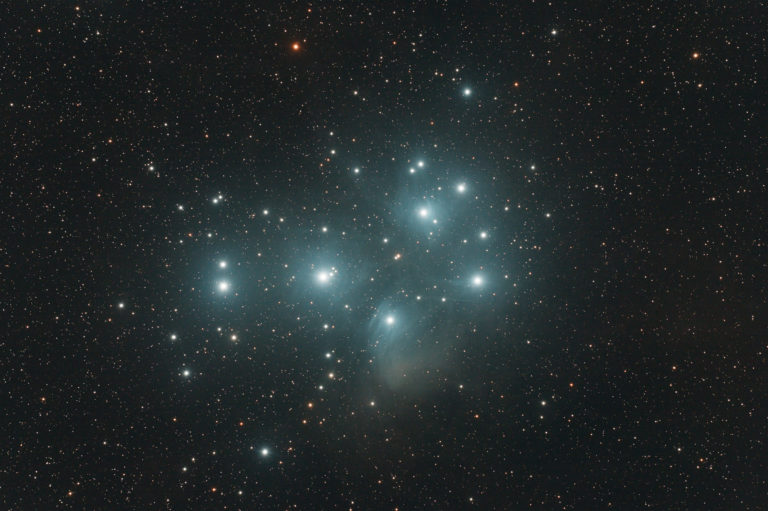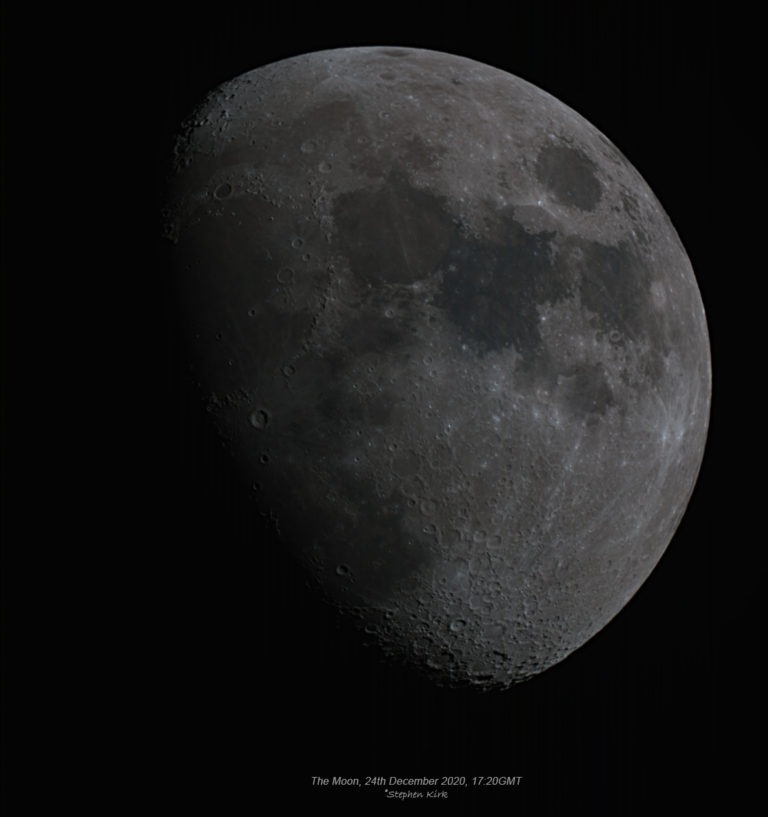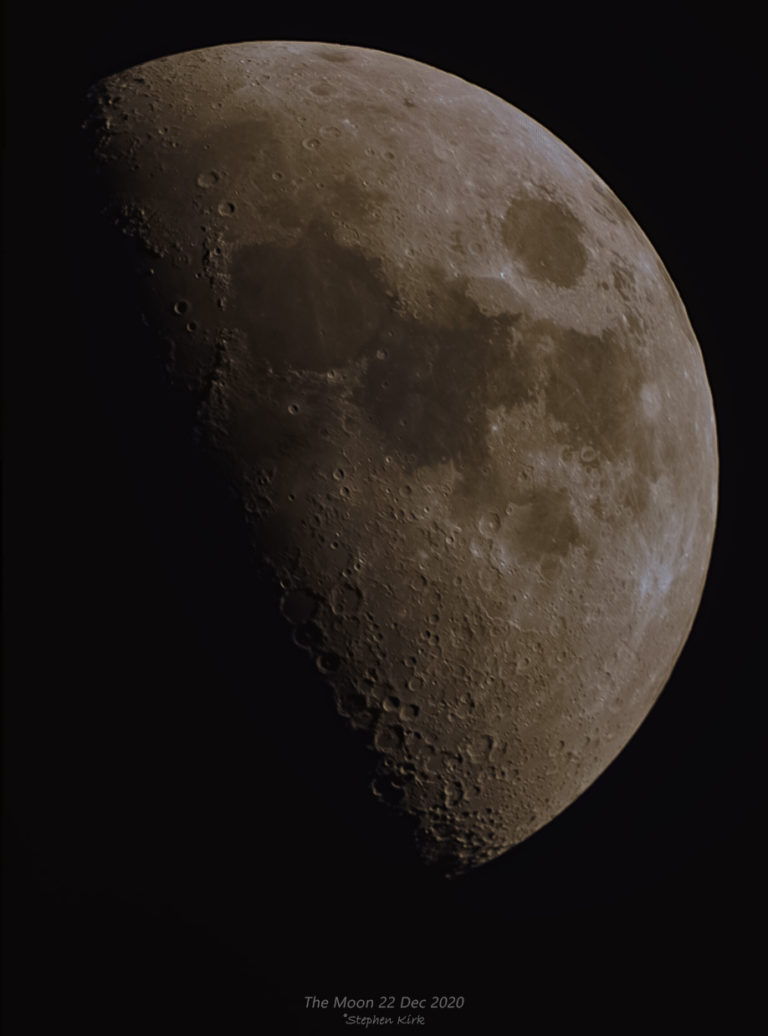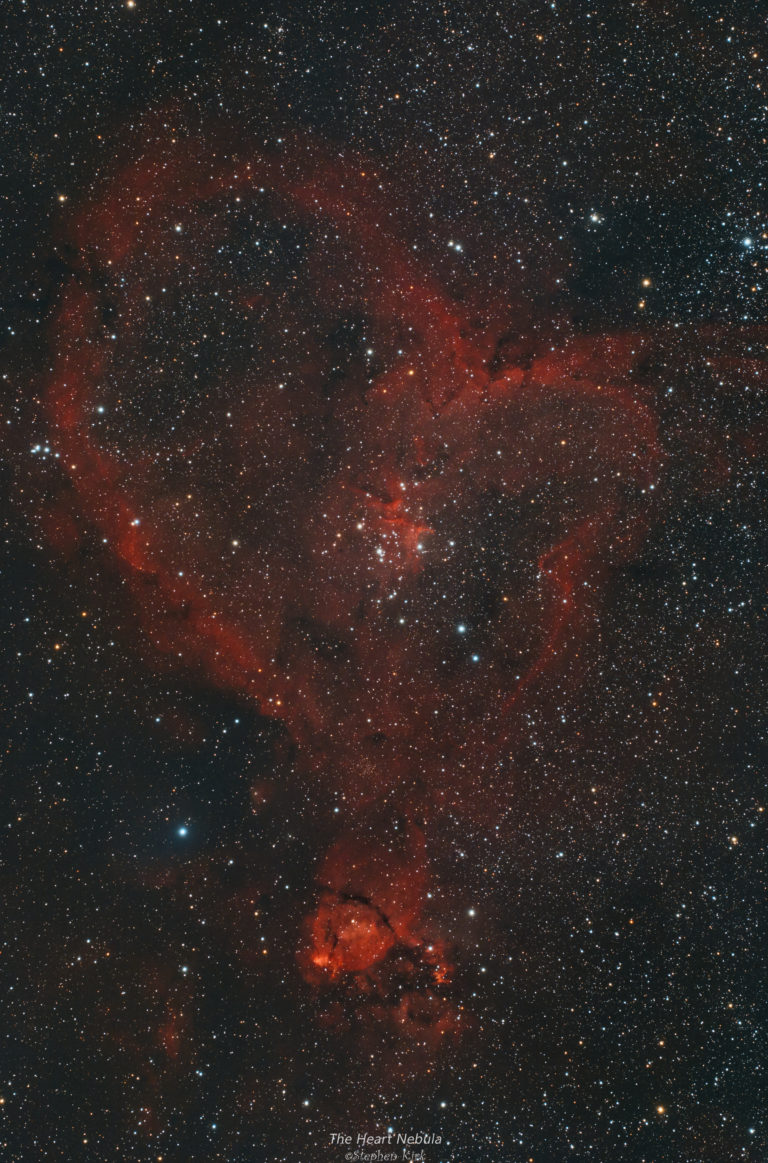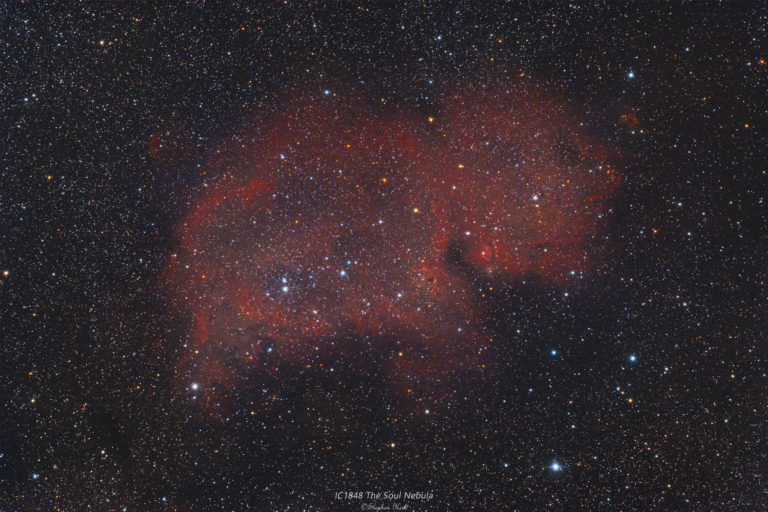Easily visible with the naked eye, M45, The Pleiades – sometimes referred to as The Seven Sisters, is a well known and famous Open Cluster in the constellation of Taurus. IT has been known since ancient times due to its prominence. The cluster is located between 450-500 light years away and contains several hundreds member stars. The cluster is quite young by astronomy standards and the cluster is moving through a cloud of gas which is easily visible in images and can been seen visually in a dark sky as well. M45 – THe Pleiades Technical Details Imaged from my backyard in Nottingham on Saturday 9th January 2021 when high to The South. A meridian flip occurred half way through the data acquisition. I used my Takahashi FSQ85 refractor and QHY268C One Shot Colour camera. The image was created with quite a small data set of only 38 x 180s…
This is a one shot colour picture of The Moon through my Takahashi FSQ85 telescope and my QHY268C colour camera. Seeing between bouts of cloud dodging was quite good with very little in the way of shimmering. This is the best 40% of 5000 frames captured with Fire Capture. I did not use the full resolution of the QHY268’s 6000×4000 sensor, I just captured the central 1600×1200. Unusual to see the FSQ85 used as a planetary or lunar scope but it does excel at this as well as deep sky astrophotography work. It is also a very good instrument for visual observations.Processed with Autostakkert, PixInsight and Photoshop. I hope you like it. It could do with a bit more colour to bring out the colour in the Mare (sea) regions. The Moon 24 Dec 2020 with FSQ85 and QHY268C
The Moon was at about first quarter when I captured this image. There are a lot of firsts in this image when capturing as I discuss below. Moon, 22 Dec 2020 First up, this is the first time I used the QHY268C for planetary photography in video mode. Before now, I always used this camera in long exposure mode. I think the camera works very well and when I cropped the capture area down to 1600×1200 from its native 6000×4000, I was capturing16fps in Sharpcap, which is quite reasonable.Secondly, this is the first time I used my Takahashi FSQ85 as a planetary/lunar scope. I think it worked our pretty well. I would normally have moved the camera over to the TEC140 or even the C925 SCT scope, however, I do not yuet have the adapters for the QHY268C to do that just yet. Technical Details As mentioned, imaged with…
A famous emission nebula in the Northern constellation of Cassiopeia, the Heart Nebula is a huge star forming region located about 8000 light years away, out in the Perseus Arm of our galaxy. It is often imaged as a pair of nebulae alongside the Soul Nebula as the famous Heart and Soul Nebulae. I have imaged them together here as well as The Soul nebula here, presented on its own. It is also known as IC1805 and Sharpless S2-190. The Heart Nebula It is a beautiful nebula and I have even seen it portrayed on Valentine cards 🙂 Technical Details Imaged from my back yard in Nottingham, UK on 20 December 2020. Seeing conditions and sky transparency were reasonable. I used Takahashi FSQ85 refractor at native focal length and a QHY268C OSC CMOS camera. I took 42 x 180s exposures and the data was captured with Sequence Generator Pro. Processed…
The Soul Nebula – IC1848 The Soul Nebula is a large emission nebula in the constellation of Cassiopeia. It is commonly imaged with the nearby Heart Nebula as a nebula pair, not unsurprisingly called the Heart and Soul Nebulae such as my rendition here. The Soul Nebula is a vast star forming region and is located about 7000 light years away, in the Perseus Arm of our galaxy, outward from the core. It is sometimes called the baby nebula because it resembles a baby! Technical Data Imaged with my Takahashi FSQ85 refractor at its native focal length and I used my QHY268C colour camera on MESU 200 mount using off-axis guiding. The mage comprises 42 x 3 minute exposures to give a total integration time of just over two hours. It could use some more data, especially some Ha data to bring put more detail in the nebula. Seeing and…

